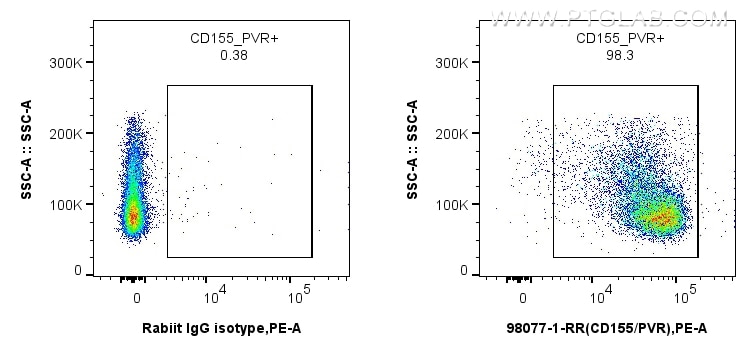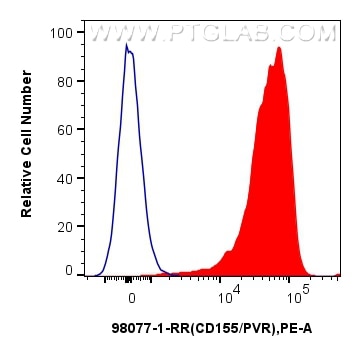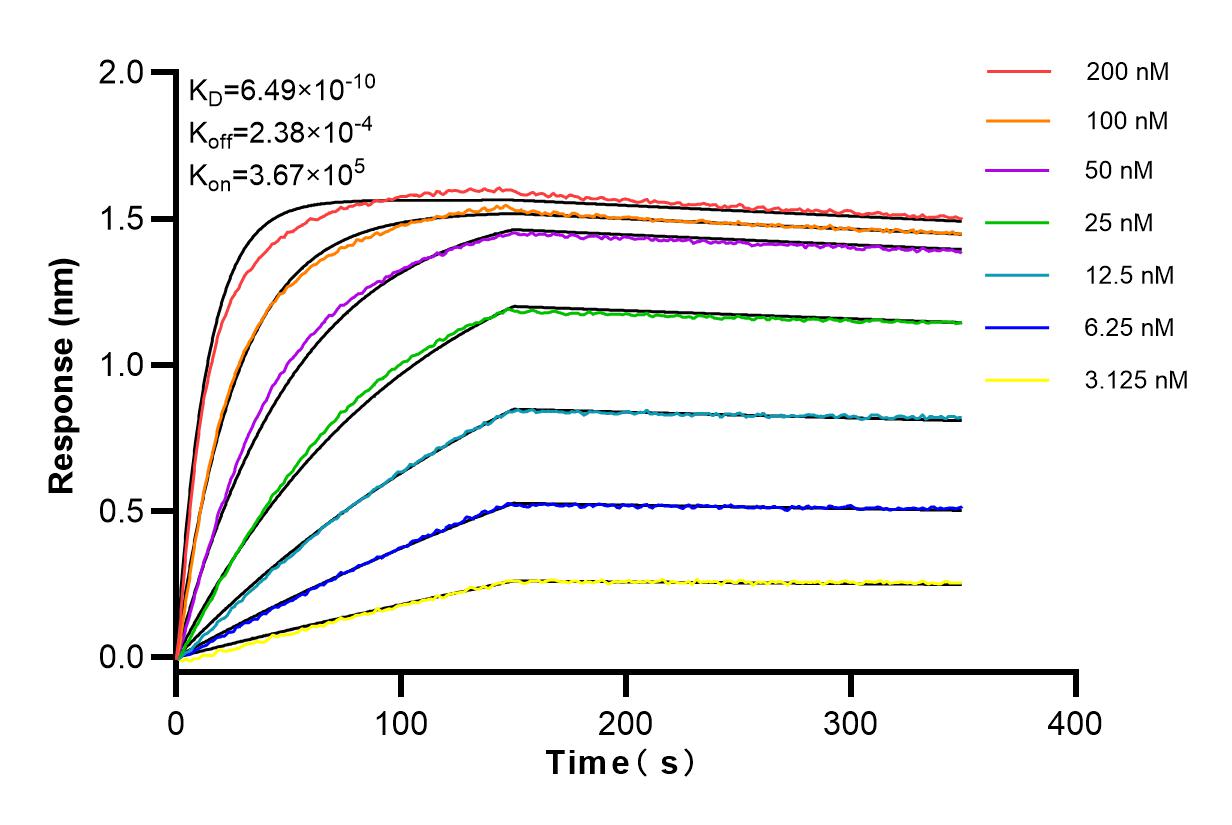Tested Applications
| Positive FC detected in | mouse thymocytes |
Recommended dilution
| Application | Dilution |
|---|---|
| This reagent has been tested for flow cytometric analysis. It is recommended that this reagent should be titrated in each testing system to obtain optimal results. | |
| Sample-dependent, Check data in validation data gallery. | |
Product Information
98077-1-RR targets CD155/PVR in FC applications and shows reactivity with mouse samples.
| Tested Reactivity | mouse |
| Host / Isotype | Rabbit / IgG |
| Class | Recombinant |
| Type | Antibody |
| Immunogen | Recombinant protein Predict reactive species |
| Full Name | poliovirus receptor |
| Calculated Molecular Weight | 45 kDa |
| GenBank Accession Number | NM_027514.2 |
| Gene Symbol | CD155/PVR |
| Gene ID (NCBI) | 52118 |
| RRID | AB_3672224 |
| Conjugate | Unconjugated |
| Form | Liquid |
| Purification Method | Protein A purfication |
| UNIPROT ID | Q8K094 |
| Storage Buffer | PBS with 0.09% sodium azide , pH 7.3 |
| Storage Conditions | Store at 2 - 8°C. Stable for one year after shipment. |
Background Information
CD155, also known as the poliovirus receptor (PVR) or Necl-5, is one of the nectin-like family members, belonging to the Ca2+ independent immunoglobulin superfamily (IgSF) in cell adhesion molecules (PMID: 37660884). CD155 is a type I transmembrane protein composed of three extracellular immunoglobulin-like domains, a transmembrane domain, and a cytoplasmic tail. It is involved in cell-to-cell and cell-to-ECM adhesion (PMID: 32019260; 11437656). CD155 acts as a ligand for immune receptors, including TIGIT, CD96 and CD226, which are expressed on T cells and NK cells. CD155 interacts with these receptors to modulate immune responses, such as T cell activation and NK cell-mediated cytotoxicity (PMID: 37660884). CD155 serves as the entry receptor for poliovirus and thereby mediates susceptibility to poliovirus infection (PMID: 15034010).
Protocols
| Product Specific Protocols | |
|---|---|
| FC protocol for CD155/PVR antibody 98077-1-RR | Download protocol |
| Standard Protocols | |
|---|---|
| Click here to view our Standard Protocols |







